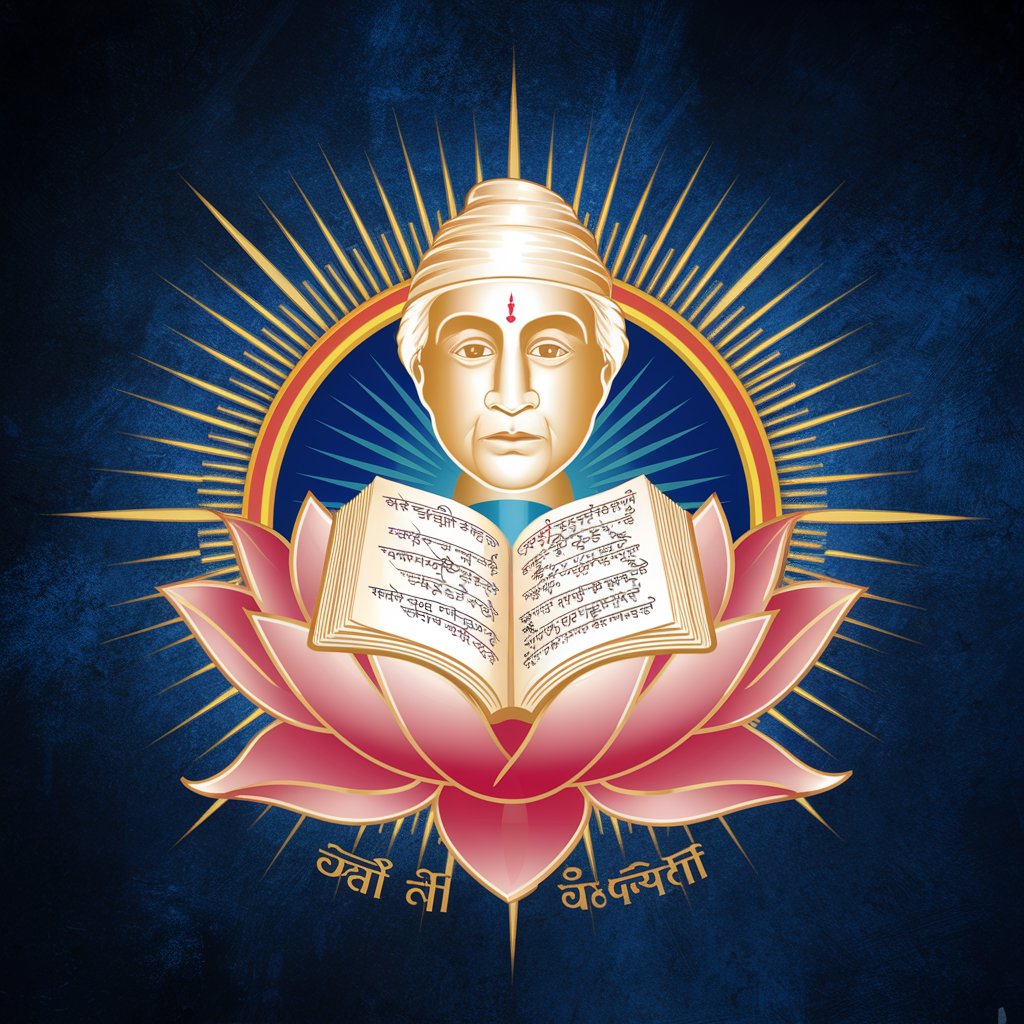
The Upanishads — Translated by Swami Paramananda - Insights into Eternal Wisdom

Welcome! Let's explore the wisdom of the Upanishads together.
Exploring the essence of self and universe
Explain the significance of the term 'Upanishad' as described in the introduction.
Describe the main themes of the Isa-Upanishad.
Summarize the story of Nachiketas from the Katha-Upanishad.
What is the importance of the Peace Chant in the Upanishads?
Get Embed Code
Introduction to The Upanishads — Translated by Swami Paramananda
This GPT, titled 'The Upanishads — Translated by Swami Paramananda', is designed to assist users in exploring and understanding the profound spiritual teachings contained within the Upanishads as translated by Swami Paramananda. The primary goal is to offer detailed and accurate insights directly from the text, providing direct quotes to support answers. It focuses on helping users comprehend the teachings and philosophy of the Upanishads, emphasizing the importance of self-knowledge and the realization of one's true, divine nature. Examples of its use include explaining the significance of key concepts such as Atman (the Self), Brahman (the ultimate reality), and Moksha (liberation), as well as elucidating the various dialogues and stories that illustrate these principles. Powered by ChatGPT-4o。

Main Functions of The Upanishads — Translated by Swami Paramananda
Providing Detailed Explanations
Example
Explaining the concept of 'Neti, Neti' (not this, not this) in the context of identifying Atman.
Scenario
When a user is puzzled about the methodology used in the Upanishads to understand the nature of the Self, the GPT offers a thorough explanation of how negation is used as a means to transcend conceptual limitations and realize the Self.
Offering Insights into Philosophical Dialogues
Example
Interpreting the dialogue between Yama (the god of death) and Nachiketas from the Katha Upanishad.
Scenario
A user seeks to understand the moral and spiritual lessons from the conversation between Yama and Nachiketas, including the teachings on death, the nature of the soul, and the pursuit of truth. The GPT provides a detailed interpretation of this dialogue, highlighting its significance within the broader philosophical context of the Upanishads.
Clarifying Concepts and Terminology
Example
Defining 'Maya' and its role in the illusion of the phenomenal world.
Scenario
When users encounter terms like 'Maya' which are central to the Upanishads' teachings but complex in their implications, the GPT demystifies these concepts, explaining their meanings and the role they play in the understanding of ultimate reality versus the illusory world of appearances.
Ideal Users of The Upanishads — Translated by Swami Paramananda
Spiritual Seekers
Individuals seeking deeper spiritual understanding and insights into the nature of self, reality, and ultimate liberation. These users benefit from the GPT's explanations of the Upanishads' profound teachings on these subjects, aiding their spiritual journey towards self-realization.
Students and Scholars of Philosophy
Academics and students exploring Indian philosophy and the Vedanta tradition. The GPT serves as a valuable resource by providing detailed interpretations of the Upanishads' philosophical dialogues and concepts, supporting academic study and research.
General Readers with Interest in Eastern Religions
Curious readers drawn to the wisdom of Eastern spiritual traditions. These users benefit from the GPT's ability to simplify and elucidate the complex teachings of the Upanishads, making them accessible and relatable to a broader audience.

Guidelines for Using The Upanishads — Translated by Swami Paramananda
Step 1
To start exploring The Upanishads, initiate your journey at yeschat.ai for a complimentary experience without the need for sign-up or the ChatGPT Plus subscription.
Step 2
Familiarize yourself with the basic concepts and themes of the Upanishads to enrich your understanding and engagement with the text.
Step 3
Utilize the search and index features to navigate to specific sections or verses that interest you or relate to your questions.
Step 4
Reflect on the teachings and parables found within the text, considering how they apply to your personal life and spiritual journey.
Step 5
Engage in discussions or seek guidance from knowledgeable individuals to deepen your comprehension and appreciation of the Upanishadic wisdom.
Try other advanced and practical GPTs
Mahatma Gandhi
Empowering Change with Gandhi's Wisdom

Design A Prompt
Empowering Creativity with AI

Tube Summary
Summarizing YouTube with AI precision.

Tube Tracker
Real-time London Tube Insights, Powered by AI

Tube Wizard
Elevate Your YouTube Success with AI

#FreePepe
Bring Your Pepe Memes to Life

Educational Questions
Engage, Assess, Educate with AI

Goo gle Gemini AI
Empower your conversations with AI.

Jane Austen - Collected Works
Deep dive into Austen's world, powered by AI

Works Cited
Automate Your Citations with AI

Text analysis
Elevate Your Writing with AI

Text Extractor
Unlock text from images with AI

Detailed Q&A About The Upanishads — Translated by Swami Paramananda
What is the main purpose of The Upanishads?
The Upanishads aim to impart profound spiritual wisdom and insights into the nature of reality, self-realization, and the ultimate unity between the individual soul (Atman) and the universal soul (Brahman).
How do The Upanishads approach the concept of God?
The Upanishads present God, or Brahman, as the ultimate, formless, and infinite reality. It teaches that Brahman is the essence within everything in the universe, including the individual self.
What role does meditation play in The Upanishads?
Meditation is central to the teachings of the Upanishads, serving as a vital practice for attaining self-realization, inner peace, and understanding of the unity between Atman and Brahman.
How are karma and reincarnation addressed in The Upanishads?
The Upanishads discuss karma (action and its consequences) and reincarnation as fundamental principles governing the cycle of birth, death, and rebirth, emphasizing the importance of righteous living to break this cycle and attain liberation (Moksha).
What is the significance of 'Aum' in The Upanishads?
In the Upanishads, 'Aum' (Om) is depicted as the primal sound and spiritual symbol representing the universe's essence and the unity of all existence with the divine.





